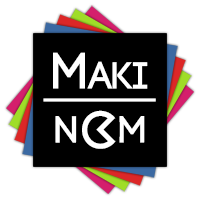The Base/Control section contains the settings related to control and basic game data.
Game Controls #
The Game Controls sub-section contains the settings for game controls, interaction control and object selection.
You can also define prefabs used when spawning the player through Makinom, e.g. using a Spawn Player node or Scene Changers with Spawn Points, and components/machines that should automatically be added to the player (e.g. when using a Set Player node).
Input Keys #
The Input Keys sub-section defines the inputs that are available. There are many different input origins available, e.g. the Unity Input Manager, key codes, mouse/touch or gyroscope.
Custom input origins allow you to access 3rd party input solutions by using reflection. You can also create your own input classes by deriving from the BaseInputIDKeySetting class.
Learn more about this in the input keys documentation.
Sound Types #
The Sound Types sub-section defines the sound types that are available. Sound types are used by Sound Templates and Sound Assignment components to assign audio clips to a sound type.
This can be used by schematics to play an audio clip based on sound types, allowing different sounds to be played based on the used game object.
Learn more about this in the audio and music documentation.
Portrait Types #
The Portrait Types sub-section defines the portrait types that are available. Portrait types are used by Scene Objects and schematic actors to assign images to a portrait type.
This can be used in dialogues to display different portrait images for a speaker and in HUDs to display portraits of the displayed content (e.g. a scene object attached to an interaction).
Learn more about scene objects in the scene objects documentation.
Machine Types #
The Machine Types sub-section defines the machine types that are available. Machine types are used by Machine Templates and machine components to define the type of the machine.
This can be used to display different Interaction HUDs based on the machine type, e.g. display a Talk text when you can talk to an NPC and a Take text when you can pick up an item.
Learn more about machines in the machines documentation.
Global Machines #
The Global Machins sub-section defines the global machines that are available. Global machines are used to start schematics whenever needed or automatically.
Learn more in the global machines documentation.
Game Object Pools #
The Game Object Pools sub-section defines the prefabs used for pooling. You can use the defined pools in scenes using the Pool component.
Learn more in the pooling documentation.
Prefab Savers #
The Prefab Savers sub-section defines prefabs and which data can be saved between scene changes and in save games.
Learn more in the saving game objects documentation.





